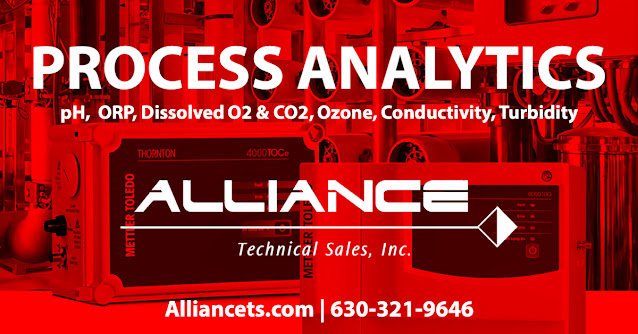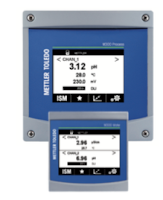Process analytics is fundamental to many industrial applications, particularly in water treatment, chemical processing, food and beverage production, and pharmaceutical manufacturing. These operations often depend heavily on precisely monitoring and controlling specific process parameters, such as pH, oxidation-reduction potential (ORP), dissolved and gaseous oxygen, dissolved CO2, ozone, conductivity, and turbidity. Understanding these parameters and how they can be effectively measured and regulated is critical to maintaining optimal process conditions, ensuring product quality, and complying with environmental and safety regulations.
What is Process Analytics?
Process analytics is the systematic analysis of various industrial processes to optimize performance and efficiency. It involves collecting, processing, and interpreting data to monitor process performance, pinpoint issues, make informed decisions, and implement operational improvements. The specific parameters monitored will vary depending on the industry and process in question, but they typically relate to the process medium's chemical, physical, and biological characteristics.
Understanding Key Parameters
pH
pH is a critical parameter in many industrial processes as it measures the acidity or alkalinity of a solution. It is essential in chemical reactions, biological processes, and corrosion control. Process analytics involves continuously monitoring pH to ensure it stays within specified limits. pH sensors, typically comprising a reference electrode and a pH-sensitive glass electrode, are used to measure this parameter.
Oxidation-Reduction Potential (ORP)
ORP measures the tendency of a solution to either gain or lose electrons, essentially quantifying its oxidizing or reducing potential. This parameter is critical in chemical reaction processes like wastewater treatment and disinfection. ORP sensors, similar to pH sensors, utilize a reference electrode and a sensing electrode to provide a voltage output proportional to the solution's ORP.
Dissolved and Gaseous Oxygen
A process's dissolved and gaseous oxygen concentration can significantly impact chemical reactions, microbial activity, and oxidation processes. Oxygen sensors, which can be optical or electrochemical, measure the oxygen present. The sensors apply in various applications, including fermentation, water treatment, and combustion control.
Dissolved CO2
In processes like fermentation, brewing, and carbonation, the concentration of dissolved CO2 is a critical process parameter. Too much or too little can dramatically affect product quality and process efficiency. Infrared absorption or chemical sensing methods are often used to measure dissolved CO2 levels.
Ozone
Ozone is a powerful oxidizing agent used in water treatment and bleaching processes. Concentration needs close control to ensure effective treatment while minimizing the risk of harmful byproducts. Ozone sensors usually work by measuring the absorption of UV light, a characteristic property of ozone.
Conductivity
Conductivity measures a solution's ability to conduct electricity related to the concentration of ions in the solution. It's a crucial parameter in processes involving aqueous solutions, such as water treatment and chemical production. Conductivity sensors typically operate based on the principle of Ohm's law.
Turbidity
Turbidity measures the cloudiness or haziness of a fluid caused by suspended solids. It is a crucial parameter in water and wastewater treatment, as it can indicate the effectiveness of filtration processes and the presence of pathogens. Turbidity sensors usually work by measuring the scattering and absorption of light.
The Role of Process Analytics
Process analytics plays a critical role in modern industrial operations. By continuously monitoring these parameters and controlling them within defined limits, operators can maintain optimal process conditions, maximize efficiency, and ensure the quality and consistency of their products. Furthermore, data from process analytics can be used for predictive maintenance, helping to prevent equipment failure and reduce downtime.
In summary, process analytics provides invaluable insights into industrial operations, offering real-time visibility and control over critical process parameters. As technology advances, process analytics capabilities will expand further, bringing even more significant benefits to a wide range of industries.
Alliance Technical Sales, headquartered in Clarendon Hills, Illinois, are experts in evaluating, specifying, and applying process analytics instrumentation across many industries. Contact them at 630-321-9646 or visit their website at https://alliancets.com.


